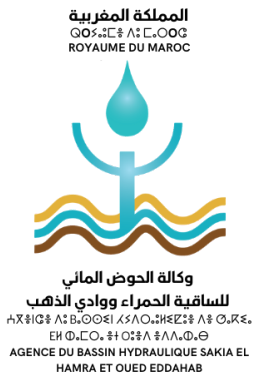- Home
- Agency
- Missions
- Evaluation and Monitoring of Water Resources
- Planning and Management of Water Resources
- Granting of Authorizations and Concessions
- Prevention And Protection Against Floods.
- Review of Projects Impacting Water Resources
- Financial and Technical Assistance
- Research and Development
- Integrated Water Management and Control of Water Use
- Services
- E-ABHSHOD
- Webmail Access
- Platform MAA DIALNA
- Tenders ABHSHOD
- Public Procurement Portal
- FAOLEX Database
- Platform of the Ministry of Equipment and Water
- Platform AJAL
- Platform ROKHAS
- Platform MAJALISS
- Transparency Portal
- National Claims Portal
- National portal of citizen participation
- Electronic administrative document control terminal
- Media Library
- Blog
- English
Developing the Master Plan for Integrated Water Resources Management, Local Water Management Plans, and Drought Water Scarcity Management Plan and Ensuring their Implementation:
This mission encompasses crucial aspects of integrated and sustainable water resources management in the region. Here is a detailed expansion of this mission:
- Development of the Master Plan for Integrated Water Resources Management:
- The Agency plays a key role in developing the Master Plan for Integrated Water Resources Management. This comprehensive plan integrates both quantitative and qualitative aspects of water resources, defining long-term guidelines for their sustainable management.
- Local Water Management Plans:
- In addition to the master plan, the Agency collaborates with local authorities to develop Local Water Management Plans. These plans take into account local specificities, priority uses, and the needs of the population, contributing to decentralized and adapted management.
- Drought Water Scarcity Management Plan:
- The Agency formulates a specific plan for managing water scarcity during droughts. This plan includes emergency measures, water conservation actions, and coordination mechanisms to mitigate the impacts of drought on water resources.
- Assessment of Resources and Needs:
- Before developing the plans, the Agency conducts a thorough assessment of available water resources and projected needs. This includes analyzing current and future demands, considering demographic changes, economic activities, and climate trends.
- Identification of Vulnerable Areas:
- The Agency identifies sensitive areas where water resources are particularly vulnerable. This may include ecologically fragile zones, critical watersheds, or areas prone to significant anthropogenic pressures.
- Equitable Allocation of Resources:
- The plans developed by the Agency aim to ensure the fair allocation of water resources among different uses, such as agriculture, industry, drinking water supply, and environmental needs. This allocation is based on sustainability and social justice criteria.
- Incorporation of Environmental Issues:
- Planning integrates specific strategies for preserving aquatic ecosystems, protecting natural habitats, and promoting environmentally friendly practices.
- Strategies for Climate Change Adaptation:
- The plans developed by the Agency incorporate strategies for adapting to climate change. This includes anticipating changes in hydrological patterns, extreme weather events, and promoting resilient practices.
- Water Conservation Measures:
- The plans include specific water conservation measures, such as wastewater reuse, optimization of irrigation networks, and the promotion of efficient technologies to reduce water losses.
- Promotion of Participatory Management:
- The Agency encourages participatory management by involving local stakeholders, communities, and water users in the planning process. This fosters a collaborative approach and better acceptance of implemented measures.
- Implementation of Plans:
- The Agency ensures the effective implementation of the developed plans. This involves coordination with local authorities, government agencies, and other stakeholders to ensure the realization of planned actions.
- Regular Evaluation of Plans:
- Plans undergo regular evaluations to ensure their relevance and effectiveness. Necessary adjustments are made based on changes in the environment, demographics, and water demands.
In summary, the mission of “Planning and Management of Water Resources” by the Sakia El Hamra and Oued Eddahab Hydraulic Basin Agency aims to ensure integrated, balanced, and sustainable management of water resources in the region, anticipating future challenges and promoting resilience to environmental changes.

